#impossible challenge: draw characters consistently
Explore tagged Tumblr posts
Text
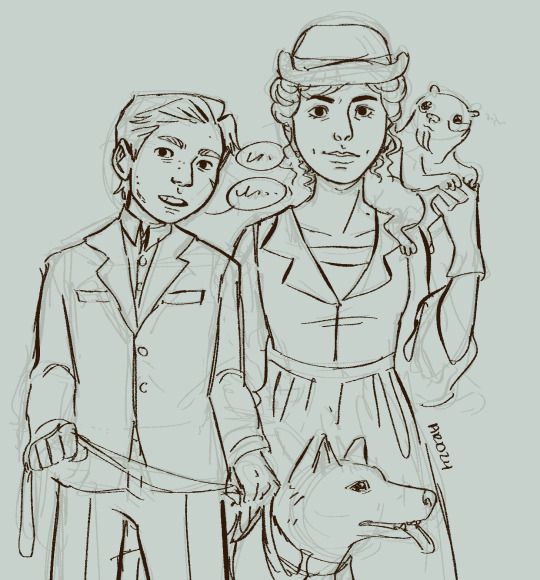
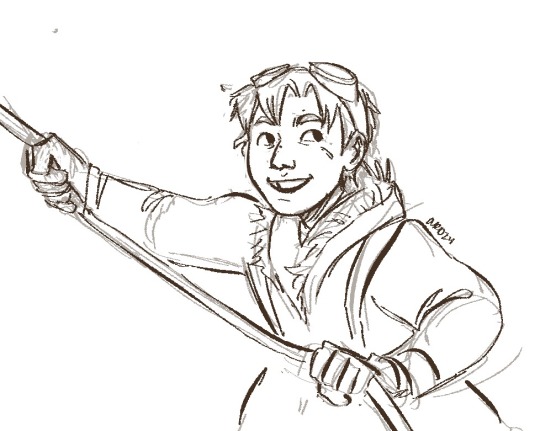
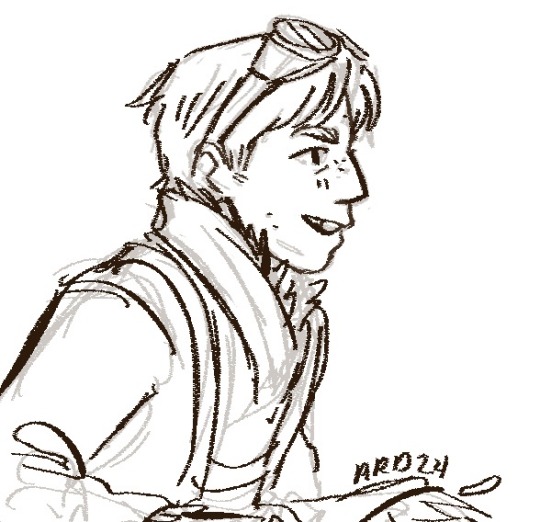

More messy Leviathan scribbles because I’m still trying to determine how I want to draw Sharp’s face
#the first one is just#pov: ur being perceived by dr Barlow and her young assistant#i just think they’re neat#i FORGOT TO DRAW DYLANS TIE OOPS#dr. Nora Barlow#Nora Barlow#Dylan sharp#deryn sharp#leviathan trilogy#leviathan series#al chatters#fanart#doodles#sketchy sketchy#my art#impossible challenge: draw characters consistently
71 notes
·
View notes
Text



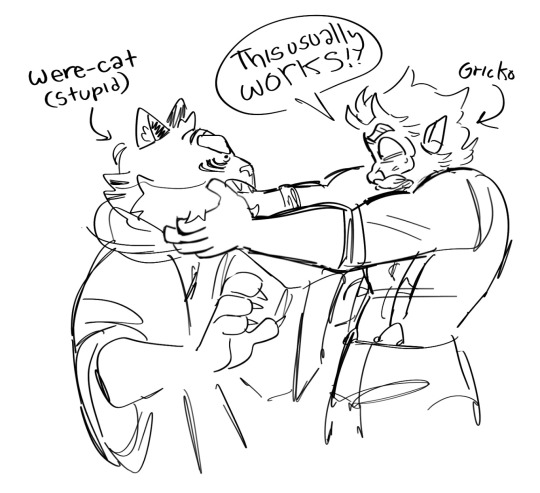

ouaw doodle dump!!
#legends of avantris#once upon a witchlight#gricko grimgrin#morning frost#gideon coal#hootsie grimgrin#the post doesn’t really have spoilers but I guess the tags kind of do so if you haven’t seen past ep 20 don’t read the rest of the tags#Hootsie i love her dearly but I need to learn how to draw her better#guess which episodes I watched today impossible challenge#he was MAAAD when frost gave away the whistle#I might’ve exaggerated it but in my head this is what it looked like#(I think about the memories they gave to the hares too much fucking Gideon and frost dude giving their stuff away ughhhhh)#gricko and Gideon body swap was#something#consistent sizes of characters is not a concept Im familiar with#Gideon looks off to me but I have no idea why so#Hootsies color by number 🫶#implied grimmorning 😙#except it was just an actual line from an episode
546 notes
·
View notes
Text
Secrets

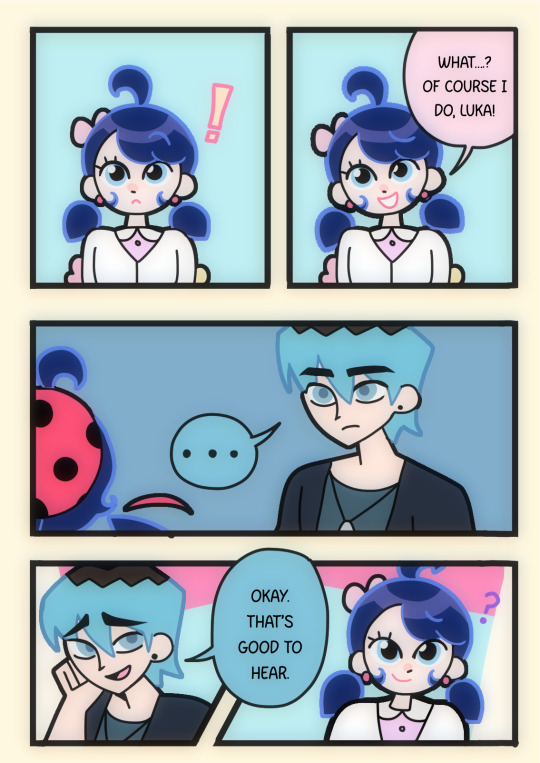
#I’m trying to find a good way to draw Luka without making him look 25#draw a character consistently challenge: impossible#ho the things you’ve lied about…..#mlb#chocoau#mlb au#miraculous ladybug#ml#miraculous au#miraculous lb#fan comic#chocoau comic#notice how the ice cream colors represent char noir and Marinette-#like Luka has Marinette on his mind#but Marinette has chat noir on hers#giggleehedhewjd
1K notes
·
View notes
Text
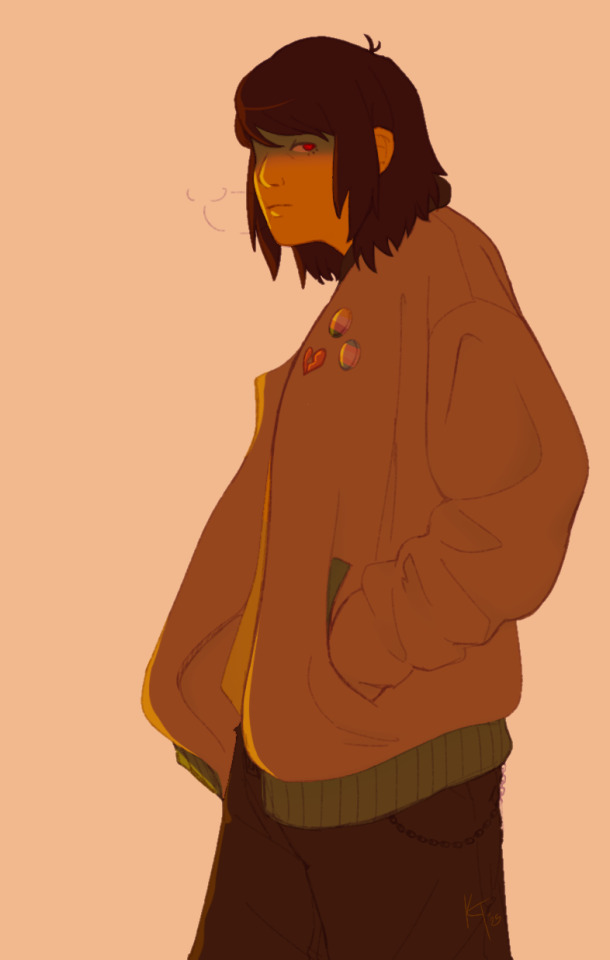
lv 4 jacket stealer
#deltarune#kris deltarune#kris dreemurr#deltarune chapter 4#technically#utdr#utdr fanart#kris dreemurr fanart#draw their hair consistently challenge IMPOSSIBLE#nonbinary character#trans character
35 notes
·
View notes
Text
@loz-chainsofcorruption
ur reply gave me an idea. Have a lazy, really bad sketch, lol.
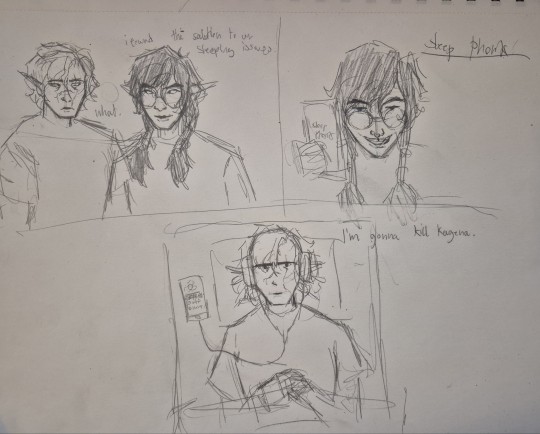
Also, for not Ri, these are my Link ocs, Akiran and Kagena, from my loz au, The Strings of Fate lolol. Just decided to make them modern for the giggles.
#the legend of zelda#legend of zelda#zelda#tloz au#zelda au#tloz tsof#Link Akiran#Link Kagena#kagena is a little sibling so they are incredibly obnoxious- a younger sibling.#same with coltin#poor akiran experiences the blunt of their bullcrap#ive also had the idea of giving kagena a gap tooth for ages so its finally jere#also#olli failed at the draw ur characters consistently for once challenge#sleep phonk#link oc#zelda ocs#tloz ocs#oc shitpost#theres another audio on the clock app that is LITERALLY akiran to a T.#something about having a lot of horses and not needing a boyfriend and something about asking your dad.#so himcore#anyways.#gosh i need to finish that actually serious art piece but i cannot give the trio concrete designs for the life of me#i just see something and go “thatd look SICK on (insert bozo here)” and go with it every time.#olli stay consistent challenge level IMPOSSIBLE. i forgot to take my meds yesterday my minds a bit ofd the rails#ollisart
10 notes
·
View notes
Text
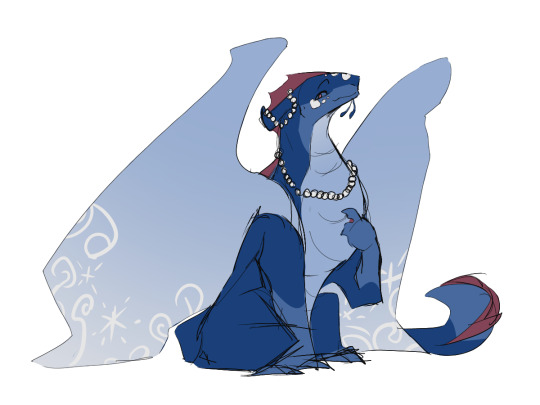
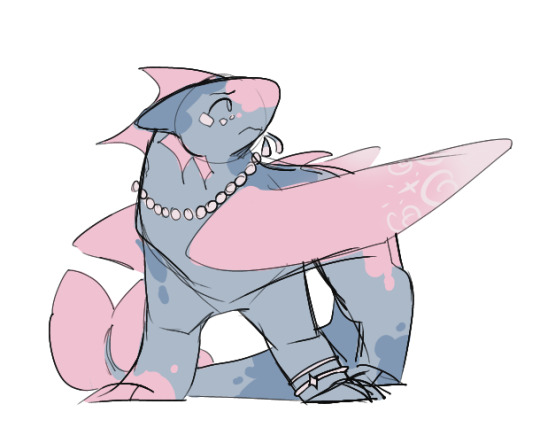
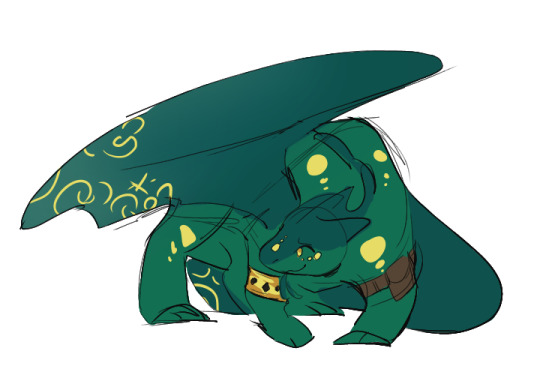
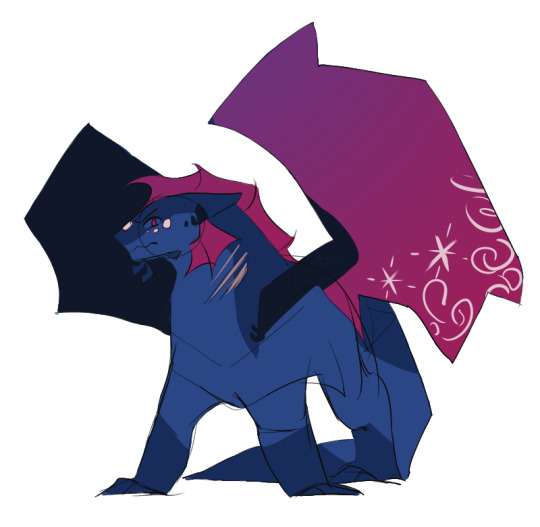

doodled some seawing royals
#idk how happy i am with these designs but i wanted to draw them lol#me have a consistent design for literally any wof character challenge (IMPOSSIBLE)#doodles#wings of fire#coral#anenome#turtle#tsunami#auklet
18 notes
·
View notes
Text
Potential Rise of the Dragon Star spoilers (sketches)
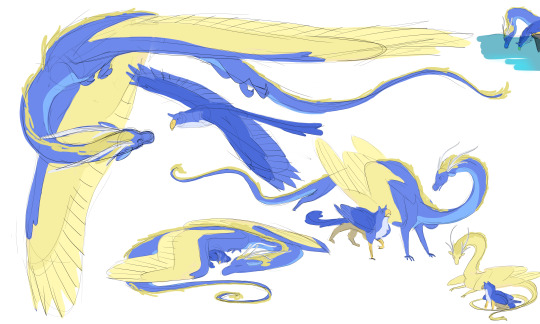
they DID get to see the seashine actually
tagging on request @authorjessowen. how dare you end shadow sun like that, to author jail you go for 1,000 years
#challenge: draw characters in consistent sizes: difficulty IMPOSSIBLE#rise of the dragon star#dragon star saga#rotds#summer king chronicles#skc#ren#suijen#dapple's summer king chronicles tag#mmm doing some more sketch-like drawings cause no way am i going to spend as much time on every piece as i did on the last one#and bc sketch-like is fun#wow i have really been on a fanart roll of late#please nobody expect this to last i am not very consistent with posting things
15 notes
·
View notes
Text
rd art dump featuring some old stuff that i just forgot to post lol
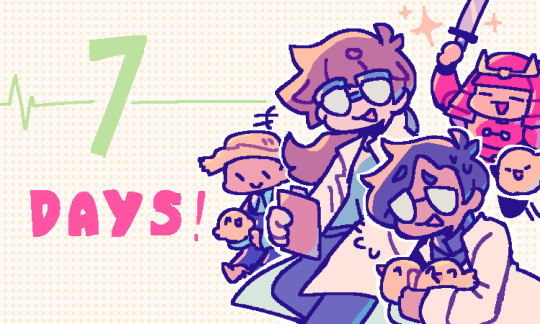
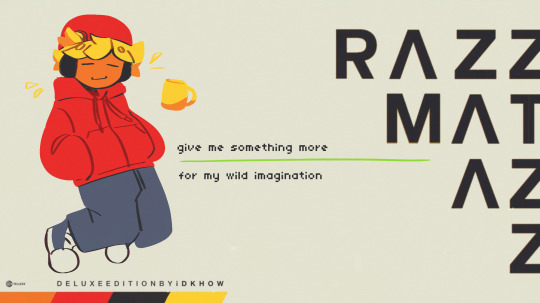
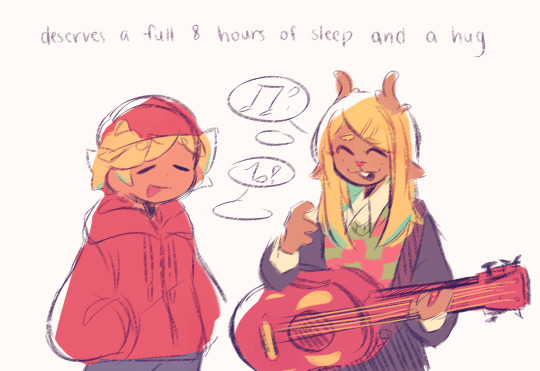
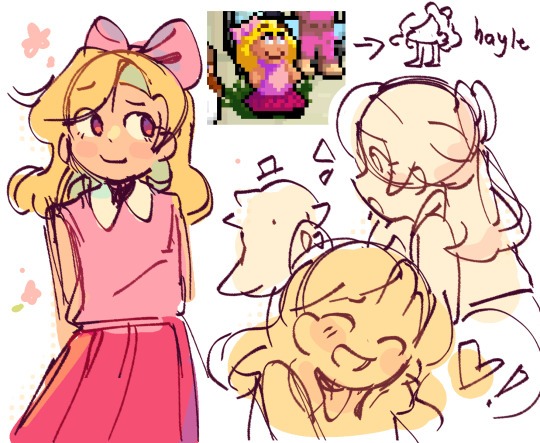
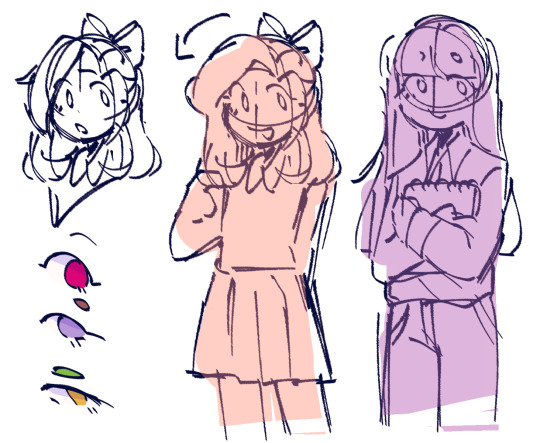
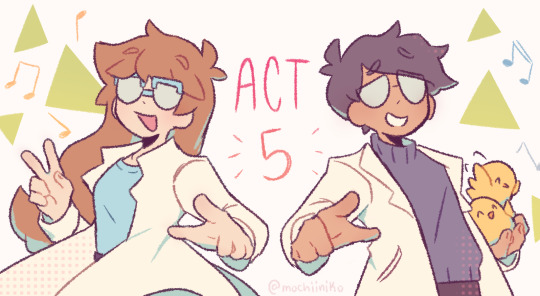
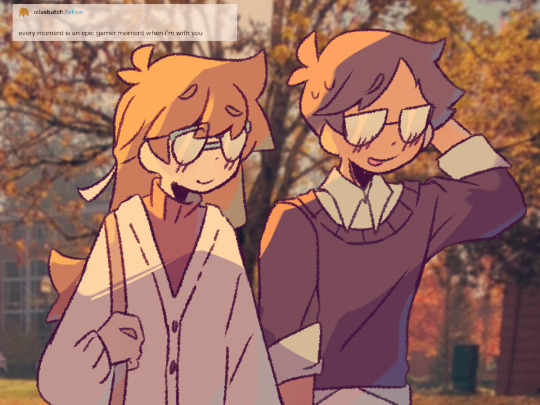
#mochii try to stick with a consistent brush style challenge (impossible)#theres a couple more but theyre either: me wanting to redraw them or just mainly cocole which ill be saving for an art dump of its own lmao#rhythm doctor#chiimo art shenanigans#i also found that one mian idol drawing and i. dont want to post that im still haunted by it 💀#also to any idkhow rd fans out there. sugar pills is literally cole no i will not elaborate#another addition to my mv list that would probably never be completed </3#the third drawing was just a compilation of blond haired characters that were also coincidentally my favorite#ive listed down like. 5 different blond characters 😭
56 notes
·
View notes
Text
A Reflection on Translation's Role in R. F. Kuang's Babel or the Necessity of Violence
I don't think I've ever encountered a work that pairs messages I so completely agree with and an execution that I so profoundly dislike. What a frustrating combination.
I'd had this book hyped up to me by colleagues in the Jp -> En media translation field, and I went into it with the impression that it was an adult fantasy/dark academia novel. I don't read much dark academia--the genre doesn't tend to do much for me--but due to a stroke of unfortunate timing had read dark academia's posterchild, Donna Tartt's The Secret History, just before this, leading me to draw unfavorable comparisons between the two. Furthermore, despite its marketing, Babel strikes me as much more of a YA novel--or at the very least pure pop fiction--and inherits many subjectively negative traits from this classification. Too high expectations, a dislike for the book's genres, and a greater understanding of translation theory than the lay audience--I was never a part of Babel's target audience and had little chance of being perfectly satisfied with it.
Nevertheless, I do think the book has tremendous value to those who aren't translators/translation studies academics or who enjoy dark academia pop fiction. While I don't read much English pop fiction, my subjective lack of enjoyment is not a statement of objective lack of value in this type of literature. I would highly recommend this book to anyone with even the slightest interest in language's effect on the world, and I commend R. F. Kuang's ability to deliver Babel's important messages to a wide audience.
At the same time, the book's status as a translation of 18th century events to a modern audience is fascinating and bears looking at, particularly in how this framework serves to undermine the characterizations and, consequently, the novel's core messages.
The Basics of Babel (Beware of Spoilers!)
Babel is, first and foremost, a medium to deliver certain key messages. The pursuit of empire is inherently evil; when the ones in positions of power will never listen, violence is one of multiple necessary tools; together we stand, divided we fall; spheres of oppression overlap in intersecting patterns; revolutions disproportionately affect the already disenfranchised; even so, structural change is necessary to alleviate structural ills; academia appears to be disconnected from the real world but has real, lasting impact. And so on. I agree (as would, I assume most of this audience--I don't think any of these ideas are especially challenging) with all of these; I'm also not trained in these fields and don't have much to comment on here.
Of secondary importance and primary prevalence in the novel are messages about language. Translation is both a tool of violence and liberation. There is inherently a degree of "betrayal" (the book's term) or "transformation" (mine) in all translation. Language and translation have real effect on the world and its individuals. It is impossible to translate with absolute fidelity and yet an absolute necessity to try. Translation--and by extension, all communication and all human contact--is the necessary violence expressed in the subtitle.
And again, I agree! I agree so completely I struggle to remember a time these themes weren't so self-evident to the point of being part of my self. Where my disagreements begin to creep in occur at the level of the characterization where, by virtue of being flattened in the "translation" process, the characters are inadvertently dehumanized to the degree of undermining these core concepts.
Babel consists of two distinct segments, the former being a 400-page sprawl of the four protagonists' upbringings and undergrad experiences in 19th-century fantasy Oxford as translation students. In this universe, magic is performed by matching a pair of words with the same denotative meaning in two different languages. The unshared secondary meanings or connotations are then manifested into the real world, thus implementing the spell. As a simple example, an English watermelon is not an English vegetable, but a Japanese スイカ is a Japanese 野菜. Therefore, if 野菜 and vegetable were matched, this spell might latch onto the notion of a watermelon/スイカ--something that exists in the Japanese definition but not the English definition--and make the melons grow faster. The protagonists thus spend the bulk of the novel learning translation theory, spell crafting, and the ways in which the British Empire is built upon the back of these spells and global exploitation.
Tensions slowly ramp up until one protagonist ultimately murders another, at which point the somewhat doddering pace revives and proceeds at a brisk clip for the last 130 pages while the surviving pair of "good" protagonists stage a revolution out of Oxford's translation magic hub. While the revolution ends in death for all but two of the "good" characters, it is implied that the revolution's aims are largely successful, with the bulk of the British Empire's spellcasting abilities destroyed. This latter segment of the story has some of the same juvenile, almost fairytale-esque simplification of the rest of the book (it's a tempting fiction to believe the destruction of a single building by a small handful of elites could bring an empire to its knees; this book ultimately reads as an academic's power fantasy), but I actually quite like it compared to the rest of the book. The narrative finally grants the main character some much-needed agency, the characterization improves by leaps and bounds, and the protagonists' views are at long last explored with contrasting and three-dimensional opinions. It's a welcome breath of fresh air and complexity.
The problem, as I see it, is that because Babel tackles such critical and multi-faceted ideas as the ethics of revolution and translation, complexity is a necessity that Babel too often forsakes. Babel flits between the competing notions of an educational call for action spoken by real, imperfect people and a cozy, somewhat twee fantasy of paper dolls coming together across racial, gender, and class lines for justice. If the work wants to discuss dehumanization via language, it can't afford to dehumanize its own characters with its language.
Babel as Translation
Kuang's narrator and narrative work hand-in-hand to produce this uncomfortable and clumsy effect.
The book is framed as a historical text written by a minor participant in the revolution in an effort to humanize the characters, "a record that doesn't make us out to be the villains." (504) This aim is achieved as Kuang's narrator follows the internal life of Robin Swift and, to a lesser degree, the three other members of his Oxford cohort in dramatic fictional prose. The text is peppered with footnotes providing extra context, much like a translator's gloss, generally about historical injustices but with occasional dips into the protagonists' private thoughts. The narrator themself, while content to remain in third-person, injects their personality heavily with didactic commentary on oppression and translation theory. I don't knock this as a storytelling technique in and of itself; a brutal hammer of a narrator could be an interesting parallel to the brutal hammer of systemic oppression. It does, however, create the impression that the narrator is hovering just over the story's shoulder at all times, unwilling to trust that the characters will perform their allotted roles once the narrator's back is turned.
Furthermore, the narrator's voice is firmly grounded in its time and place--the time being 2022 and the place being the leftist internet. The prose is undeniably the rhythmic, somewhat dramatic style presently in vogue in the English fiction market, and arguments are formed in the thinking patterns and vocabularies of modern day English internet discourse. When the work itself is set in the 1800s, this creates a slightly jarring effect--language supplanted into a setting where we wouldn't expect to see it.
This suggests the narrator is, effectively, translating a series of events written in an older English into the English of our day and age.
We must assume the narrator is taking their fair share of liberties. Apart from the inclusion of vocabulary that's wildly anachronistic (the word "narcostate" would not materialize in English until long after the 1830s), we also see the narrator's presence in the similar speech styles of all English-speakers across place of origin, class, and upbringing. Compare the college-educated Robin:
But how do you know? ... You didn't see what I saw, you don't know what the new match-pairs are-- ... It's just... It just feels like--I mean, I'm the only one who's always at risk, while you're just-- (182, quotation picked somewhat at random)
to the working-class laborer Abel:
"Is it really as bad as all that?" Robin asked Abel. "The factories, I mean." "Worse," said Abel. "Those are just the freak accidents they're reporting on. But they don't say what it's like to work day after day on those cramped floors. Rising before dawn and working until nine with a few breaks in between. And those are the conditions we covet. The jobs we wish we could get back. I imagine they don't make you work half as hard at university, do they?" (493)
Similarly, most characters retain the same vocal quirks as the narrator and Robin. See also on page 493, a third character starting and stopping herself in an identical fashion to Robin, "It's just... it's a side of the story we don't often think about, is it?" or on page 529 the same character copying Robin's habit of amending her comments with I mean, "Possibly the younger students... The ones who don't know any silverworking, I mean."
This produces a muted, washed-out effect wherein characters struggle to differentiate themselves on the basis of their personalities. But, in terms of translation, is this necessarily a bad thing? Is it wrong to familiarize the unfamiliar with the vernacular of the target audience?
Fortunately for us, Kuang's narrator has their own opinion on this very subject, delivered to us through the mouth of Ramy, Robin's love interest and generally all-around "good" character. In fact, one of the very first things we learn from Ramy is his dislike for a certain style of translation:
That's a terrible translation. Throw it away. ...and for another, it's not remotely like the original. What's more, Galland -- Antoine Galland, the French translator -- did his very best to Frenchify the dialogue and to erase all cultural details he thought would confuse the reader. ... And he entirely cuts out some of the more erotic passages, and injects cultural explanations whenever he feels like it -- tell me, how would you like to read an epic with a doddering Frenchman breathing down your neck at all the raunchy bits? (52)
Blessedly, we are spared that specific experience--if any raunchy bits existed, Kuang's narrator has trimmed them accordingly.
The reader, at this point, is expected to know little of translation theory on their own and should accept Ramy's opinion as that of fact. Ramy is the first character with purely positive associations in Robin's life, and the narrative swiftly propels us through the process of Robin and Ramy falling in love within a handful of pages. ("Robin felt a strange, bursting feeling in his chest then. He'd never met someone else in this situation, or anything like it..." (50) "...they sat cross-legged on the floor of Ramy's room, blinking like shy children as they regarded each other, unsure what to do with their hands." (50) "And [Robin] wanted so badly to impress Ramy. [Ramy] was so witty, so well-read and funny. He had sharp, scathing opinions on everything..." (51))
The reader is therefore expected to associate a liberal or heavy-handed translation style with bad practices--that is, until we learn that Ramy himself "was always ready to abandon technical accuracy for rhetorical flourishes he insisted would better deliver the point, even when this meant insertion of completely novel clauses." (224) (We must also note that this is the "polar opposite" of a "bad" character's style, which we will touch upon shortly.) Ramy, it seems, is allowed his liberties because he has "an uncanny ear for rhythm and sound. He did not merely repeat the phrases he absorbed; he uttered them in such precise imitation of the original speaker, investing his words with all intended emotion, it was like he momentarily became them." (269) Meanwhile, on page 383, we are told "Non-European texts [translated into English by Europeans]...tended to be loaded down with an astonishing amount of explanatory content, to the effect that the text was never read as a work on its own, but always through the guided lens of the (white, European) translator." This information might have been better received were it not in an explanatory footnote that takes up the half page.
I would like nothing more to give Kuang the benefit of the doubt and assume these hypocrisies are intentional, but writing a heavy-handed 500-page book just to poke fun at heavy-handed translation in a single footnote is either a Modernist masterpiece or simply not happening.
I also understand and acknowledge that there is plenty more nuance to these arguments. The Galland translation of One Thousand and One Nights bears a strong moral impetus toward exact fidelity as an introduction of a work of enormous cultural value to a society largely ignorant of that culture; Ramy's translation is a college writing assignment. Elisions for cultural sensitivity are not the same as additions for aesthetic sensibilities or contextual glosses/footnotes. Kuang's narrator is translating concepts from an academic environment to a general audience, where the balance of power is relatively equal, whereas Galland is translating across a broader power gap between cultures. Etc etc. I don't take umbrage with any of that--I also think Galland's translation practices were unacceptable, and I'd be a fool to pretend I don't take translation liberties when appropriate. My concern is that the general audience lacks this background and, when asked to reconcile these hypocrisies, will draw the conclusion that Kuang's narrator is espousing "white, European = bad / non-white, non-European = good."
Which, in the broadest brushstrokes of this colonial environment, is true! The British Empire--and empire in general--is cartoonishly evil, and I don't care much that most of the white English cast is flattened into 2D caricatures as a consequence. It's the reverse that's far more troubling.
Unfortunately, for the first 400-some pages of the book, the narrator plants all intelligent, kindhearted, or otherwise pleasant thoughts in the heads of non-English characters. (Here, non-English refers to any PoC character born outside of Britain, any half-white characters, and the one "good" Irish character. "Non-English" is a terrible classification system, but as all the "good" characters don't self-identify as British or English anyway, this will have to do for now.) Arguments between non-English characters are astoundingly minor; worse, they have little to no bearing on the overarching plot--it takes the murder of a white man to turn the story from academia romp to goodnatured revolutionary conspiracy. (And this only boils over into full revolution because a white English girl takes negative action!) Non-English characters' worst traits are annoying at best to the point where one, their repeated inability to understand intersectionality, comes across as bizarrely out of character and inappropriately dim-witted. Even then, such comments are set up to be angled at "less oppressed" characters. Robin and Ramy frequently fail to conceptualize the struggles of their female classmates or, at times, have rude thoughts about women. However, when their black female classmate Victoire is having anxiety attacks and white female classmate Letty is suffering nervous breakdowns, Robin ignores Victoire to say Letty is "not helping the general feminist case that women were not nervous, pea-brained hysterics." (368) Victoire simply cannot allowed to be "bad" in any way.
The constant need to be "good" strips characters of any ability to develop personality, deep character flaws, or culpability for their actions. For 4/5 of the book, Robin, Ramy, and Victoire are so caught in the narrator's stranglehold that they appear only little more three-dimensional than the paper-thin villains. This, while unintentional, is nevertheless a tragedy.
The Translated Narrative
Similarly, the narrative suffers from being a modern day experience transplanted onto the 19th century setting.
Protagonist Robin and the other members of his cohort are introduced as linguistic geniuses, all of whom have studied from a young age--and not always willingly--to be part of an elite class of undergraduate translators at Oxford. From the age of eleven, Robin spends hours every day studying Greek and Latin, both of which have historically been taught and to this day are taught with copious amounts of translation work. We are shown Robin translating Latin into English as a child (31)--amusingly, the author he works on will be complained about later as very difficult to translate when taught in the later years of undergrad, an inconsistency I can only assume is unintentional--and have every reason to believe it is done competently. Furthermore, Robin continues to retain his native fluency in Mandarin, meaning he should be intimately familiar with basic translation theory and the differences in language by the time he reaches university.
However, the modern day reader is not expected to share this same linguistic background, and the narrative must quickly bring them up to speed. Thus, upon arriving at Oxford, the narrative takes the audience on a ride through a series of bare-bones basic translation theory lectures.
The first lecture opens on the professor "try[ing] to impress upon [the protagonists] the unique difficulty of translation," (104) an absurdity when presented to characters who have been translating for years. Suddenly, characters are catapulted out of their 19th century elite backgrounds and into the bodies of 21st century freshman.
"I don't understand," says trained classicist Letty. "Shouldn't a faithful translation of individual words produce an equally faithful text?" (105) (Later, we discover that Letty's translation style leans strictly literal in opposition to Ramy's. This is posited as a bad choice--which is broadly speaking true--but becomes an uncomfortable parallel between Letty's unyielding, "bad" personality and her "bad" translation choices. Ramy also equates being a good listener and with being a good translator (535), leading to one of the few places where I openly disagree with the narrator. In an ideal universe, truly good translation could only be unlocked with great care; unfortunately, technical skill does not equal strength of character.)
"Is faithful translation impossible, then?" a professor later "challenges." "Can we never communicate with integrity across time, across space?"
"I suppose not," reluctantly (153) says Victoire, who is "raised to read and compose and interpret." (541)
The notion that these characters can have drilled in languages and translation for years on end without having ever considered these basic concepts is laughably absurd. It is like an engineering student receiving a full-ride scholarship to MIT, walking into class on the first day, and saying, "What are all those letters doing on the board next to the numbers?"
And yet the narrator would have us believe this because, fundamentally, the narrative is that of a 21st century university undergraduate's experience. Someone with an interest in languages but little formal training in translation--we certainly don't teach that in American high school--could, conceivably, walk into these lectures and be charmed by "this dramatic mysticism, these monologues that must have been rehearsed and perfected over years of teaching. But no one complained. They loved it too." (107)
Our imaginary 21st century undergrad takes Robin by the hand and leads him along four years of lectures, luncheons, exams, rowing club, and endless giggle sessions with friends. It's cozy and cute. Everything is magical and ready-made for a Pinterest board.
Meanwhile, the bloody cogs of the British Empire churn relentlessly in the background. Robin is invited to participate in a largely low-stakes revolutionary operation and, for about 200 pages, most of his inner turmoil centers around the conflicting desires to lean into the revolutionary movement and the desire to cement himself in a cushy life at Oxford.
Here, the lighthearted atmosphere is by design; for the modern-day reader to feel shock at the abrupt turn in tone, the luxuries and conveniences of an idyllic modern-day academic experience must be shown. However, it must be stressed that this tonal shift occurs over 400 pages in. The slow pace hinders the narrative's ability to be considered in its full 19th century ramifications. We spend so long in Robin's 21st century head that the core struggle, for a sizable chunk of the novel, is coming to terms with one's position of privilege in society and how that affects one as a translator. These are valuable things to consider, and it is something the audience--most of whom are closer to Lettys than Victoires in terms of societal position--should devote time and attention to, but I cannot help thinking there could've been more efficient use of space in this book. It is difficult to examine more of the hard-hitting topics when so much of the book is devoted to the author's nostalgia for their college experience.
The narrative's other core issue interweaves with something I touched upon earlier, the lack of agency in its core characters. For most of the book, Robin is largely shepherded along by forces outside of him, giving him an (intentional) learned helplessness under the oppressive colonial system. However, likely unintentional narrative choices contribute to this problem and give Robin the impression of being even less empowered than he is meant to be. Robin's first two decisive actions of any note are triggered when another character forces him to make an "It's us or them" style choice. In both cases, Robin chooses to side against the revolutionaries for self-motivated reasons, and the narrative later rewards him with a third "It's us or them" choice motivated by purely selfless desires. These could be great character-establishing moments--if any of those choices mattered. But they don't! After choice 1, Robin winds up in contact with the revolutionaries again due to complete coincidence. After choice 2, Robin faces the personal fall-out of turning in the revolutionaries...until a more pressing issue turns up, only partially of Robin's doing (the question of whether this was intentional or accidental is discussed heavily throughout the rest of the book), at which point the personal issues dissolve and vanish. Oh, and the revolutionaries suffered no consequences after Robin ratted out their safe house. Everything is fine and dandy!
And also deeply frustrating. If Robin's actions don't matter, then why have Robin act at all? Is Robin a person or a cardboard cutout doll?
Similarly, the narrative is littered with deus ex machinas to an unfortunate degree. The reader quickly becomes accustomed to a common narrative structure: A problem presents itself, the protagonists panic and make an attempt to fix the problem, that solution fails, tension heightens--and a side character (often a revolutionary) steps in and resolves the problem. So, too, are the major turning points orchestrated by other people. Robin's father instigates his own murder by approaching Robin. Robin is radicalized by Letty setting the police on the revolutionaries.
Robin, then, has no more control over his person than a puppet until the final 1/5 of the book. This is partially intentional as a means to demonstrate Robin's unconscious conforming to racial stereotypes of passivity as a means to be "accepted," even partially, in colonial British society. Had this vanished entirely upon Robin's dramatic turn to agency in the final hundred pages, I wouldn't have been the slightest bit concerned--but it doesn't. Once Robin seizes control of the magical translation tower on page 448, he sits and waits for outside forces to act. And waits. And waits. And waits. The army arrives, but that's all right, because here come the townspeople, who've made a miraculous turn of heart and are ready to be good revolutionaries alongside the Oxford elites. Oh no, they're running out of food--oh, whew, the problem solved itself by virtue of the townsfolk showing up. Uh-oh, Robin has to make the decision of breaking the siege under flagging moral--oh never mind, here comes Letty to take that problem away. I can't wait for Parliament to respond and end the siege for us, but until then, we just all have to wait. And wait. And wait.
It is 84 pages before Robin takes another action.
Translation as Necessity
I don't fault Kuang for the ideas she presents, nor the means she chooses to employ, but I do think it's a tragedy that her own writing skills are inadvertently undercutting her work. Babel is, at heart, a heavy translation of a fictional 19th century event that accidentally does the very thing it criticizes--making people less than people through the act of translation.
And yet still we must translate.
Kuang is correct and expresses herself elegantly when her narrator says:
Language was just difference. A thousand different ways of seeing, of moving through the world. No; a thousand worlds within one. And translation -- a necessary endeavor, however futile, to move between them. (535)
Communication is an attempt to link two agents to one another, and communication is informed by its medium. The conventions and limitations of e-mail shape a message differently than does a phone. A translation, then, is an act of communication wherein the medium plays a dual role of conveyance device and additional agent. The translator, be they human or machine, must always make choices. There is no chance a message can passage from agent to agent to agent perfectly intact.
But then, can a message ever be perfectly communicated? If languages are only another medium, then so too will the language inform the delivery of the message. The words I've chosen in this essay are not the same as my thoughts, nor is your impression of this text the same as my words. Language itself, of course, has no inherent meaning. Even single words--let's take "vegetable" again--conjure different images and different associations with different people. There is no Platonic ideal of "vegetable" we can point to and say this, and only this, is "vegetable."
And if it's that hard to communicate with individuals who share the same language, what about individuals in other languages? Or how about when languages overlap? My command of English is informed by the facts of my life, both the demographic--white, American, Latino, male, born in the 90s, asexual, multilingual, middle-class, blah blah blah--and the experienced--listened to this life-changing song, read those books, played those games, loved and cherished those other people. Your English, too, is informed by all the millions and millions of things that make up you--some of which may be other languages. If, being as you also speak Japanese, you consider a "watermelon" to be a "vegetable," who am I to tell your concept is lesser?
In the way English is no monolith, Japanese is no monolith. So are Spanish, French, Mandarin, Swahili--every individual uses their language or languages in a different way in an imperfect attempt to express their unique thoughts. It's daunting, then, to be the medium with which someone else reaches out and attempts to convey a message.
But that's no excuse not to try. Rather than not convey anything at all, we all have to try, and try our best, to convey ourselves. The fact that it's impossible to translate--to communicate--should not be the deterrent it so often is. Without conveyance, we are nothing to one another. It is communication that allows us to shape ourselves and shape the world around us.
I think a lot about translation as an act of betrayal or violence. I agree that it can be, and often is, but underlying that I think it's even more simple--translation is an act of transformation. Transformation, or change, can be influenced by malice or sheer clumsiness. We are betrayed by and violated by those who would seek to change us against our will; on a broader scale, it's remiss for anyone working with different languages to ignore the power dynamics between their source and target cultures.
At the same time, is it always such a bad thing to be changed? I'm reminded of all the vocal tics I've picked up from friends or favorite books. It's an honor to see colleagues integrate phrases I often use in translation in their translations; in turn, I'm constantly writing down words I see in their works and adding them to mine. I'm molded by everything I've ever cared for and that's cared for me, and so are you. So is everyone on the planet Earth.
When we communicate, then, it's vital that we do so with care. We must try to be conscious of our changing, even if doing so will not guarantee success. We have everything to lose by not trying at all.
While the nature of today's Japan-Anglosphere relations are nothing like the relationship between the early 19th century British Empire and its colonies, there are undeniable power balances and cultural considerations to be made. I'm always cognizant of the freedom my US salary gives me versus that of my JP counterparts, the skewed relationship of American vs Japanese global power, the US's continued military presence in Japan, and so on. I don't let it bother me on a daily basis--guilt with no outlet isn't productive--and I recognize how very lucky I am to be able to dismiss that at all. I'd prefer to continue to listen to others and, when possible, use what powers I have for assisting.
At the same time, I don't deny that differences of race affect many core tenets of my work. Japan occupies an odd position in the Anglosphere cultural world of possessing both immense soft power and a strong perception of negative alterity. Besides the overtly offensive opinions, we see so often notions of Japanese stories--and by extension, their Japanese authors--as excessively exciting or alienatingly weird by virtue of being Japanese. Japanese society is so polite! Or, on the flip side, Japanese society is so racist! People draw conclusions--sometimes containing a kernel of truth, sometimes not--from the whole and apply it to the individual.
Even talking about it too much leaves a funny feeling in my mouth. When I speak in broad strokes about what applies to how most people use Japanese, will that be taken as a statement about every individual person's command of the language? If I constantly compare Japanese, English, Japanese, English, Japanese, English, won't that serve to make them seem like two irreconcilable things? What about all the many people who make their home in both languages? And third, fourth, fifth languages too? When I talk about English with the unconscious expectation that this is where the lack of alterity is found, am I driving away those who approach English in another fashion? And so on.
It's especially difficult working in media, unlike interpretation or other related fields with small target audiences, when the target audience is so big. I change the way I talk when I address my friends vs my coworkers--but what about when I address a vast sea of people, an audience I can't control? How do I know what English phrases resonate with them? How do I tailor my communications and the communications I've been entrusted with so the messages land home, as close as they possibly can?
What I do, then, is try to translate in such a way that always considers the person first. When a line shines, I want it to shine in English. I want authors to appear clever and goofy and banal, because people--Japanese-speakers, English-speakers, both, and neither--are way, way more similar than we give ourselves credit for. I want my one weird author to sound weird in all the right places, because he's not weird by virtue of being Japanese, he's weird by virtue of being a feral goblin of a man. I want my one socially sensitive author to sound caring and clever, even if the words she uses don't align with English discourse. I want the sexy scenes to sound sexy, the funny scenes to be funny, the kinda stupid to be kinda stupid--because people are dumb. And amazing. And so very, very good.
I think a lot about a beginning Japanese learner saying "I'm sorry!" (which came across as "Because it's my fault!") when hearing her instructor had a cold. I think a lot about the man who spoke very little English and still went "D: Fall!" to alert me when I dropped a bag. I think a lot about how, no matter how imperfect, we all want to express care for our fellow human beings. I love all the many things that make us different, and I love all the many ways in which we're exactly the same.
Betrayal, violence, and care bubble out of us no matter how much we try to stop them. It's on us to channel the ways in which we change the world and it is, of course, a necessity.
This book drove me up the wall. Go read it.
36 notes
·
View notes
Text
Bakuman
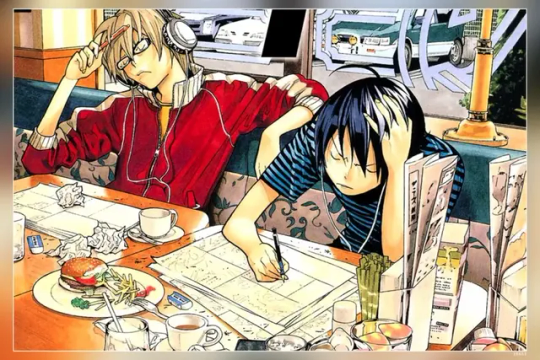
“I prefer to be a humble dreamer, with visions to be realized, rather than the ruler of people with no dreams or desires.”
MAL Rating: 8.52
I enjoyed watching Bakuman for several reasons. The most prominent one being that it's always enjoyable to watch people work hard to achieve their dreams. That's what the anime seemed to be about. It was about two middle schoolers, one of them being seemingly unaffected by the mundane struggles of life, realizing a new passion, a new dream to work towards. Kawaguchi Tarou, Mashiro's uncle, was a one-hit wonder in the manga industry and the person who made Mashiro want to pursue manga in the first place, died due to overworking. His uncle's death had turned him into any ordinary child just going through life without any passions to pursue. He left art, but his relentless classmate Takagi Akito, an aspiring writer who wanted to turn his stories into mangas for he loved manga so much convinced him to draw a manga with him. With Mashiro's art and Takagi's story, you could just tell this was gonna be a duo you will root for.
And also comes the important promise. Mashiro asks the girl he likes to marry him when their work turns into an anime and she can voice its heroine. An aspect of the story many people disliked, but I found it to be such an amazing addition to it. "Living up to the challenge" they say. It is sucha shounen-like feeling that you just have to get energized, brimming with motivation and the spirit of youth for a fulfilling 3 seasons with a total of 75 episodes.
Together, Mashi and Takagi turn into Ashirogi Mutou. They produce work after work in hopes of serialization, popularizing their one-shot comics and leaving their mark in the industry as an up and coming hotshot manga artist. Takagi comes up with unorthodox yet energizing stories and Mashiro completes the story with his brilliant art. They face numerous challenges, numerous authors and do their best to be the best. And hopefully, achieve their dream of becoming the best manga author along with an adaptation.
The most beautiful part of the story is that it was written and illustrated by the prolific duo of Tsugumi Ohba and Takeshi Obata, the creators of Death Note. They created something special with Death Note, highly regarded as one of the best works in Shounen Jump. And it's almost like the two of them shared their story, their perils and their falls to their long running journey in the manga world.
I know this anime doesn't go with all the pretentious fuck kinda stuff I watch but I enjoyed it a lot. It has made me respect long running authors like Eichiro Oda, Tite Kubo and Masashi Kishimoto. It really takes a lot to produce high quality manga that can stay on top week after week in the rankings and maintain that position so you don't get cancelled. It made me think a lot about why sometimes stories that should've ended a long time keep stretching and stretching for no reason; and why good but not so popular shows get cancelled. The industry is pretty cruel.
I loved the trio of Hattori, Takagi and Mashiro. The romance was meh, and the full time support Kaya-chan was just a badly written character. It was painful to watch what the writers were doing to her but I guess it's for the best. And they didn't show Mashiro and Azuki's wedding, which is a bummer (I didn't care until I saw how many people were actually bummed out about the final episode). The supporting cast of manga authors were really fun to watch. Hiramaru and Aoki getting the W in the end was a huge blast of an episode.
I liked this show a lot. It has made me wanna pick up long running shows like One Piece. I considered One Piece readers to be the type to "not understand what anime is about" but I understand that I was just being pretentious. Long running shows like One Piece are really hard to create. And to do that in a consistency like Eichiro Oda does is almost impossible to imagine just from watching the anime. The guy is a creative genius and a legend in the manga community. And he's still producing work. Freaking amazing.
8.5 out of 10. Almost hard to believe that this is from the creators of Death Note. But I think that the death note manga was actually stretched and it did not end the way the authors wanted it to. The final manga written in the anime was called Reversi, a very similar story to Death Note. Any anime watcher could tell the similarities and how Reversi was based on their real life work Death Note. And they wanted it to end in their own way, not how the company wanted it to or how the producer wanted it to. It's a great look into an industry of hard-workers, dreamers, and most importantly- gamblers. Not the sin city kind, but the kind that gamble their entire lives on creating successful art.
12 notes
·
View notes
Note
92 as mtmte Tarn?
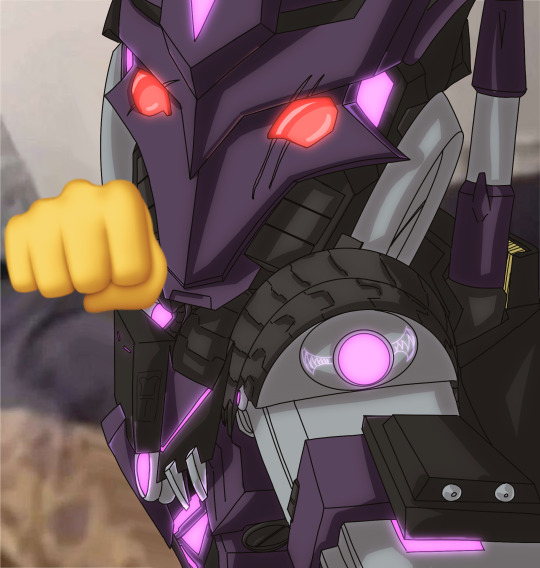
Punches you ❤️ (Original post: here)
This one was both fun and dreadful to do, but sleeping on it helped. xD I love Tarn as a character so much and- yup, this is him.
Comic artist draw character designs consistently challenge: impossible also. I ngl use fanart as reference more and more BHSBH
Anyway, back to exams. Hopefully more tomorrow!
#transformers#maccadams#maccadam#art#tf fanart#decepticons#decepticon#100 cat transformers#mtmte tarn#idw tarn#tf tarn#transformers tarn#transformers meme#transformers idw#tf idw#tf mtmte#tf comics#tf#transformers mtmte#silly little guy#asks open#send asks#send me asks#ask#send anons#anon ask
37 notes
·
View notes
Text
kai fwc draw literally any character consistently challenge (level impossible)
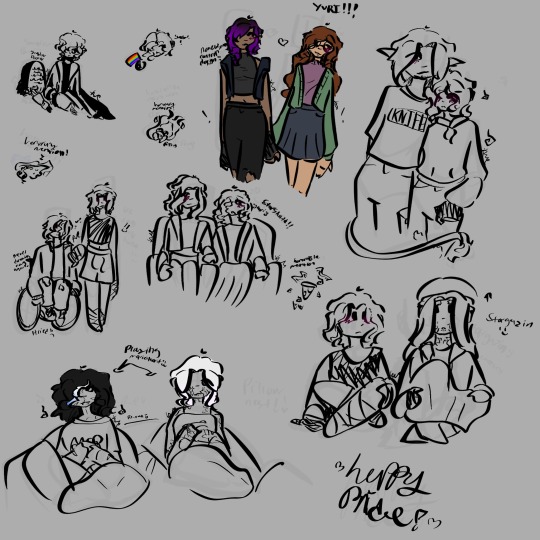
#yay:3c this took embarrassingly long. anatomy will be the ebd of ne#fear the day i learn anatomy I will be unstoppable.#also i am NOT main tagging ANY of these ships i am LAZY and there are ALOT#also pretty please acknowledge my honorable mentions i would've drawn them fully but i have chronic wrist pain#jrwi pd fanart#THATS IT☝️#my art<3#my art#Ferals chatter🪿
2 notes
·
View notes
Text
The Recondite Haesorog
My response to this week’s BestiaryPosting challenge from @maniculum
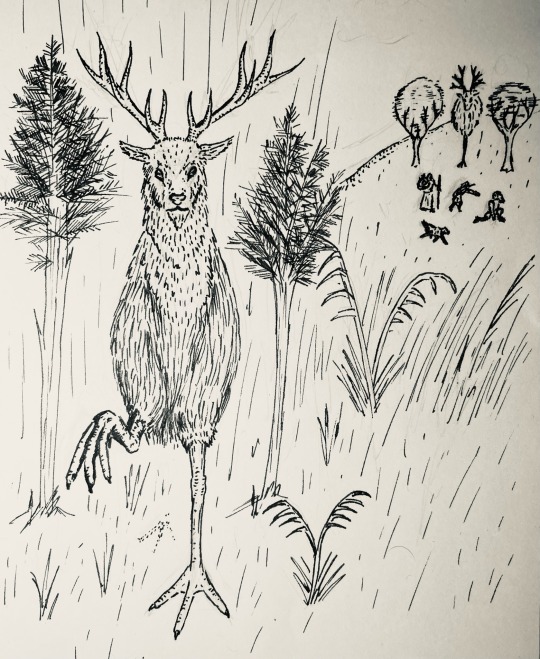
Now, I actually have a suspicion what this creature might be - I wasn't deliberately trying to work it out, but when I was throwing around concepts for the drawing, something clicked... If it is what I think it is, it's at the same time a really cool description, with some bits which are wildly out... I didn't pursue that particular line of thinking with my piece this week, but I'm going to be interested to see what this one turns out to be :D
Jinhao shark fountain pen with a fine, hooded nib, with Monteverde Raven Noir ink, over initial pencil sketch. I'm going to do some experimenting with the brush pen and the fude-nib in future pictures again; I appreciate the consistency of the lines that this pen is giving me, but I suspect those other pens would give a little more character to the lines.
As an aside, I'd genuinely encourage anyone looking at these challenges to give it a try; its given me a bit of focus to get back into something I used to enjoy, without too much pressure (both in terms of the time and also this mostly being about fun!)
As ever, reasoning under the cut…
"Ethiopia is the home of a creature called the Haesorog, as large as an ox, with the footprints of an ibis, branching horns, the head of a stag, the colouring of a bear and the same thick coat."
Okay! For such a short description, we've actually got a fairly good amount of detail. Of course, some of it doesn't really make sense together - bird feet with horns and a bear's thick coat? What could be going on here?
I figured that, rather than trying to work out something realistic, I'd actually treat the description at face value as much as possible. As such, we have an ox-sized, deer-headed creature with long, bird legs and feet, covered in shaggy hair! I actually tried to put a bit of deer anatomy into the legs, but they were primarily referenced from ibis photos - I'd set myself on that particular pose, but it was impossible to find a front-facing picture of an ibis with its leg raised (not perfect, but turned out better than I was fearing!)
The horns gave me cause for thought - horns don't tend to branch, but they're very distinct from antlers (antlers being bone, and shed yearly, while horns are covered in a keratin sheath which is not generally shed). In the end, and given the description of it having a deer's head, I went with antlers, specifically taking inspiration from the wapiti (American/Asian elk) and red deer for the grand, branching antlers rather than palmate antlers of the fallow deer I'm most familiar with. I did give them a little texture, as a nod to the horn though.
Charles Knight's Animal drawing was really useful here - the short essays in that book made me consider more carefully some aspects that I wouldn't have just looking at the drawings, including things like ear position, and the general vibe of the animals I was referencing.
Still experimenting with plants and trees for the background - some came out better than others, but I've learned a few more things from this about what does and doesn't work well!
I'm now kinda wishing I'd drawn a fuzzy horned dinosaur for this, but I'm still happy with the directionI went 😅🦖
"It is said that the Haesorog changes its appearance when it is afraid and, when it hides itself, takes on the likeness of whatever is near — a white stone or a green bush or whatever other shape it prefers."
Well, this is cool; an ox-sized animal that is also a master of disguise. You can see my nod to this in the background where a hunting party (plus dog) are walking straight past a Haesorog disguised as a tree...
I did a little look into medieval costume (and dog breeds) from Ethiopia; I know that this is a bit of a catchall term for Sub-Saharan Africa, but it gave me a place to start. Turns out that the figures were too tiny to put in any detail of the clothing (or to make the Ethiopian Highland Dog) distinct, but the history there is fascinating (including Ethiopian delegates to Florence in 1441 being frustrated about the Europeans constantly referring to their kind as 'Prester John' 😆
This seeming magical power of disguise also gave me a couple of extra influences in the style - the forest god from Princess Mononoke, and the goats from that film and from the Nausicaä manga. Not sure how much it came across!
13 notes
·
View notes
Text
Crafting Worlds Beyond Words: The Art of Fantasy Book Design
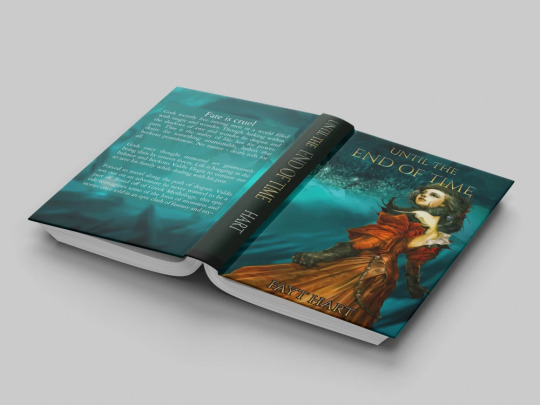
Introduction: Where Imagination Meets Ink
In the realm of literature, fantasy books hold a unique power – they transport readers to realms unknown, filled with mythical creatures, epic quests, and intricate magic systems. But before a single word is read, it's often the book's design that first sparks the imagination. Fantasy book design is more than just aesthetics; it's a crucial element in conveying the essence of the story, luring readers into new worlds, and ultimately, making a book unforgettable. As professional writers and publishers, understanding the nuances of effective fantasy book design is paramount to captivating your audience and standing out in a crowded market.
The Pillars of Captivating Fantasy Book Design
A truly exceptional fantasy book design is a symphony of interconnected elements, each playing a vital role in creating a cohesive and immersive experience.
1. The Cover: The Gateway to Another Reality
The book cover is arguably the most critical component of fantasy book design. It's the first impression, the silent ambassador that beckons a reader to pick up the book. For fantasy, this means:
Evocative Imagery: Think dragons soaring, ancient castles under a moonlit sky, mysterious artifacts glowing with magic, or a lone hero facing an impossible challenge. The imagery should be high-quality, professional, and instantly convey the genre.
Compelling Typography: The font choice for the title and author name is crucial. For fantasy, often ornate, calligraphic, or powerful block fonts are used, but they must remain legible. Consider how the font can subtly hint at the book's themes – elegant for high fantasy, rugged for gritty tales, or whimsical for lighter adventures.
Strategic Color Palette: Colors evoke emotions and themes. Dark, brooding colors might suit a grimdark fantasy, while vibrant hues could indicate a more adventurous or magical tone. The palette should be consistent with the mood and setting of the story.
Focal Point and Composition: The cover should have a clear focal point that draws the eye, and the overall composition should be balanced and dynamic, guiding the reader's gaze.
Genre Conventions vs. Uniqueness: While it's important to adhere to some fantasy genre conventions so readers instantly recognize the book's category, a truly great cover will also possess a unique element that sets it apart.
2. Interior Layout: Guiding the Reader's Journey
Beyond the cover, the interior design of a fantasy book plays a significant role in readability and immersion.
Font Selection for Body Text: Legibility is paramount. While the cover font can be ornate, the interior font should be clean, readable, and comfortable for long stretches of reading. Common choices include serif fonts, which guide the eye along the line.
Chapter Headings and Page Numbers: These can be an opportunity to subtly reinforce the book's theme. Ornate chapter headings, unique numbering styles, or even small, thematic icons can add to the overall aesthetic without being distracting.
Whitespace and Margins: Adequate whitespace prevents the page from looking cluttered and improves readability. Properly set margins ensure a comfortable reading experience and a professional appearance.
Maps and Illustrations: Maps are almost a prerequisite for epic fantasy. They provide a visual reference for the reader, enhancing their understanding of the world. High-quality, detailed maps are a significant draw. Illustrations, whether full-page or smaller vignettes, can further enrich the reader's experience, bringing key scenes or characters to life. These must be professionally rendered and consistent with the book's art style.
Special Elements: For complex fantasy novels, consider elements like character lists, glossaries of terms, or even a pronunciation guide for names and places. These thoughtful additions enhance the reader's understanding and engagement.
3. Binding and Materials: The Tangible Experience
The physical attributes of a fantasy book contribute significantly to its perceived value and overall appeal, especially for collectors.
Hardcover vs. Paperback: Hardcovers offer durability and a premium feel, often preferred by collectors. Paperbacks are more accessible and budget-friendly.
Spine Design: The spine is what readers see on a bookshelf. It needs to be clear, readable, and visually appealing, consistent with the front cover design.
Paper Quality: The weight, texture, and color of the paper can subtly influence the reading experience. Cream-colored paper is often preferred for novels as it's less harsh on the eyes than bright white.
Special Finishes: Embossing, debossing, foil stamping, spot UV, or even unique textures on the cover can elevate a book's design, adding a tactile dimension that appeals to buyers. These are particularly effective for special editions or collector's items.
The Design Process: From Concept to Creation
Effective fantasy book design is not an afterthought; it's an integral part of the publishing journey.
Understanding the Narrative: A designer must thoroughly understand the book's genre, themes, tone, key characters, and pivotal moments to create a design that truly reflects its essence. Close collaboration with the author is vital.
Target Audience Consideration: Who is the book for? A young adult fantasy will have a different design aesthetic than a grimdark adult fantasy.
Research and Inspiration: Looking at successful fantasy book designs, as well as art, mythology, and historical periods, can provide valuable inspiration.
Professional Designers are Key: While DIY tools exist, investing in a professional book designer is highly recommended. They possess the expertise in typography, color theory, composition, and print specifications to create a truly polished and effective design.
Multiple Iterations and Feedback: The design process often involves several rounds of concepts and revisions, with feedback from the author, editor, and potentially even beta readers.
SEO Optimization for Your Fantasy Book Design Article
To ensure this article reaches its intended audience, we've integrated several SEO strategies:
Primary Keyword Integration: "Fantasy book design" is naturally woven throughout the headings and body of the article.
Related Keywords: Terms like "book cover design," "fantasy novel layout," "book interior design," "professional book designer," and "evocative imagery" are included to capture a broader range of search queries.
Clear Headings and Subheadings: These improve readability and allow search engines to easily understand the article's structure and content.
In-Depth Content: Comprehensive and valuable information on the topic signals to search engines that the article is an authoritative resource.
Natural Language: The article is written in a professional yet engaging tone, avoiding keyword stuffing.
Call to Value: While not explicitly a call to action for a service, the article encourages readers (publishers, authors) to prioritize professional design.
Conclusion: Designing Dreams into Reality
Fantasy book design is an art form in itself, a crucial bridge between the author's imagination and the reader's experience. It's about more than just making a book look pretty; it's about crafting a visual narrative that complements the written word, drawing readers into magical worlds and making their journey unforgettable. By prioritizing thoughtful design elements from the captivating cover to the immersive interior, authors and publishers can ensure their fantasy novels not only find their audience but also leave a lasting impression, transforming dreams into beautifully tangible realities.
0 notes
Text
The Zerg Rush: An Imaginative Impetus in the Realm of Workmanship
Workmanship, the all inclusive language of articulation, has consistently developed all through mankind's set of experiences, mirroring the steadily changing scene of culture, society, and innovation. From the stunning magnum opuses of the Renaissance to the intriguing establishments of contemporary craftsmen, inventiveness exceeds all logical limitations. In the domain of imaginative motivation, startling impacts can rise up out of the most impossible sources. One such impact is the "Zerg Rush," a term beginning from the universe of computer games however tracking down its direction into the vocabulary of workmanship as an impetus for development and inventiveness. In this investigation of workmanship and its assorted impacts, we dig into the idea of the Zerg Rush and its effect on the inventive strategy.
Craftsmanship as an Impression of Humankind:
Workmanship fills in as a mirror to society, catching the embodiment of human encounters, feelings, and desires. It incorporates a wide range of mediums, including painting, mold, writing, music, execution, and computerized media, each offering a one of a kind road for articulation. From the beginning of time, craftsmanship plays had a crucial impact in molding social characters, testing cultural standards, and igniting unrests.
Craftsmen, driven by a significant longing to convey and interface, utilize their imagination to investigate complex subjects, incite thought, and bring out feeling. Whether through authenticity, deliberation, or conceptualism, craftsmanship rises above etymological obstructions, social partitions, and worldly limitations, cultivating a feeling of solidarity and compassion among different crowds.
The Rise of the Zerg Rush:
Beginning from the domain of computer games, the expression "Zerg Rush" acquired prominence in the continuous technique game StarCraft, where players controlling the Zerg group utilize amassing strategies to overpower their adversaries with sheer numbers and constant animosity. The term has since risen above its gaming starting points to saturate mainstream society, filling in as an illustration for fast and facilitated activity in different settings.
In the realm of workmanship, the idea of the Zerg Rush encapsulates a feeling of suddenness, overflow, and force — an imaginative ethos that resounds with specialists trying to break liberated from shows and investigate new boondocks of articulation. Specialists draw motivation from the tireless energy and dauntlessness of the Zerg Rush, embracing the turmoil of the innovative strategy and releasing their creative mind with uninhibited enthusiasm.
Embracing Mayhem: The Zerg Rush Mindset in Imaginative Articulation:
The Zerg Rush mindset urges specialists to embrace mayhem as an impetus for development and imagination. Like the tenacious development of the Zerg crowd, craftsmen explore the material, the stage, or the computerized space with a need to get moving and reason, impelled by a determined quest for imaginative investigation. They shun compulsiveness and embrace defect as basic components of the imaginative excursion, tracking down excellence in the surprising and the crude.
The Zerg Rush mindset commends suddenness, trial and error, and joint effort, enabling specialists to push past their usual ranges of familiarity and investigate new roads of articulation. It underlines the significance of facing challenges, testing shows, and embracing disappointment as a chance for development and disclosure. Craftsmen draw motivation from the disorder of the innovative approach, tracking down freedom without any limitations and rules.
Coordinated effort and Local area:
Similarly as players in a multiplayer game direction their endeavors to execute an effective Zerg Rush, specialists frequently team up with companions, guides, and crowds to understand their dreams. The Zerg Rush mindset cultivates a feeling of brotherhood and common perspective inside the creative local area, where people meet up to intensify their effect and investigate new boondocks of articulation.
Cooperation empowers craftsmen to use their aggregate assets, pool assets, and push the limits of innovativeness. Whether through joint presentations, interdisciplinary tasks, or imaginative assemblages, specialists find strength in solidarity, manufacturing associations that rise above individual limits and advancing the aggregate woven artwork of human articulation.
Conclusion:
Workmanship is a demonstration of the unfathomable capability of the human creative mind — an excursion of investigation, revelation, and self-articulation. The idea of the Zerg Rush offers an exceptional focal point through which to investigate the elements of inventiveness, coordinated effort, and development inside the creative circle. As craftsmen explore the intricacies of the innovative approach, they draw motivation from the confusion of the Zerg Rush, tracking down freedom in suddenness, joint effort, and the persistent quest for articulation. In the steadily developing scene of workmanship and imagination, the zergrush fills in as an update that motivation exceeds all rational limitations and that genuine development thrives in conditions where shows are tested, limits are pushed, and imagination rules.
0 notes
Text
Link Building Agencies
For organizations looking to succeed in the always changing field of digital marketing, having a strong online presence is essential. It is impossible to overestimate the importance of successful relationship development when competition heats up. Let me introduce you to Orange Outreach, a well-known link building agencies in USA that specializes in strategically constructing links to increase a business's exposure and trustworthiness.
Orange Outreach's Origins:
Orange Outreach began operations with the goal of revolutionizing online marketing. Since then, the company has grown into a major force, providing creative and moral link-building solutions that make a difference in a challenging industry.
Deciphering the Orange Method:
Orange Outreach takes great satisfaction in using a tailored and methodical approach to link building. As opposed to offering one-size-fits-all solutions, the agency works directly with customers to comprehend their particular requirements, target market, and industry intricacies. This methodical approach guarantees that every link-building effort is customized to match the unique goals of the customer.
youtube
Building Ethical and High-Quality Links:
Orange Outreach's dedication to moral link-building is one of its defining characteristics. So that it could be able to achieve the reward of one of the top best link building agencies in USA . The agency avoids using black-hat strategies that can damage its customers' online reputations by closely adhering to industry standard practices and search engine guidelines. In addition to attesting to the agency's moral character, this dedication to moral principles guarantees its clients steady, long-term success.
Entire Link Building Solutions:
Orange Outreach provides a wide range of services for creating links, such as:
01. Content Marketing and Outreach: Using relevant, high-quality content to draw in credible links from other websites.
02. Guest posting services: Publish quality content on websites targeted to particular niches in order to establish brand credibility and obtain useful backlinks.
03. Link Audit & Cleanup: To keep your link profile tidy and search engine friendly, find and fix any potentially dangerous backlinks.
04. Analysing competitors' link-building tactics will help you create a more focused and efficient strategy.
Verified Outcomes & Customer Success Stories:
The success of Orange Outreach's clients determines its level of success. With happy clients spanning multiple industries, the agency's outstanding portfolio shows off significant gains in search engine ranks, organic traffic, and overall online visibility.
Keeping Up in the Virtual Race:
Orange Outreach consistently refines its techniques in order to stay ahead of the curve in a field as dynamic as digital marketing. The company makes research and development investments and stays up to date on industry trends and algorithm modifications in order to deliver innovative link-building solutions that stand the test of time.
Conclusion:
Link building becomes an essential component of the digital marketing mix as companies learn to negotiate the complexity of the online environment. Orange Outreach is a leader in the link-building industry because of its dedication to quality, moral behaviour and client focused strategy. Orange Outreach is a dependable partner in attaining sustainable growth and success for companies looking to rise in the search engine rankings and establish a strong online presence.
0 notes